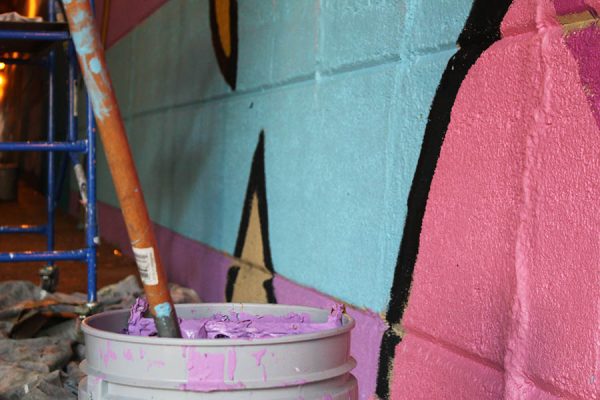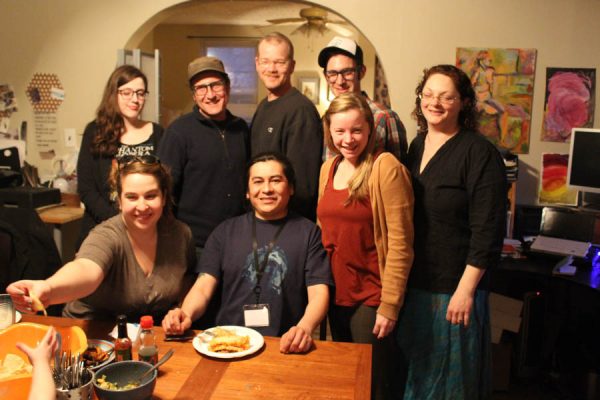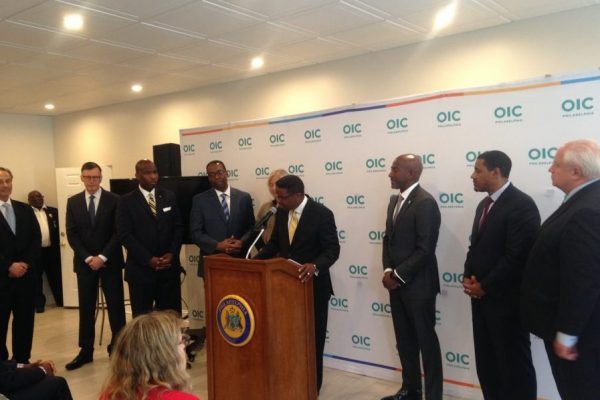Know Your History! Otto Wolf, Architect of More Than 60 Buildings in North Philly
Although small in total land-area, Brewerytown is known for its distinct location, architecture, and history. Most people can assume how this Philadelphia neighborhood earned its name, but who is responsible for the unique architecture and development of this region?
Otto Wolf had around 500 buildings credited to his name by the time of his death. His architecture can be found in Oslo, Norway; Sacramento, California; Calgary, Canada; Havana, Cuba; and many other places. Most of his work was in the Mid-Atlantic States, New York, New England, and Pennsylvania. This famous architect attributed more than 60 buildings in Brewerytown and he incorporated German aspects to his projects, similar to the houses, saloons, and community in which his breweries resided in.
Otto Wolf was born on November 11, 1856 in Philadelphia, and he comes from German descent. He spent most of his life in Philadelphia until his death on December 19, 1916. Otto received a public education and then earned a B.S. Degree in Architecture and Engineering from the University of Pennsylvania in 1876. Before Otto built breweries in the area, he worked in Chicago with Frederick Wolf from 1880-1883, when he decided to come back to Philadelphia and opened his own firm.
As if a man in his mid-twenties living in Philadelphia needs another reason to devote his life to the beer industry, it helps that Otto’s father was also very active in the business. His father, Charles Wolf, was an early partner of Theodore Engel (more on him later). Charles decided to walk away from being a partner for a specific brewing company and decided to become a manufacturer of brewer’s supplies. Many years later, Otto would build several buildings for his father’s old friend Mr. Engel.
While English brewers maintained their locations near the Delaware River, German brewers began moving out in the mid-1850s, just before Otto Wolf was born, and just before the beginning of the Civil War. Because beer needed to be kept in either cool cellars or excavated caves in order to remain chilled during their “lagering” phase, German brewers settled to the vicinity of 31st and Thompson Streets, north of present-day Fairmount Park. This area allowed these German brewers to escape the heat of Philadelphia’s summers, which is why twelve different breweries were located within four city blocks of each other. Brewerytown became an area where German architects made German-style beer in high-tech breweries with influences from German architecture.
One may be wondering why the beer industry had such a significant impact on the area. The National Register of Historic Places states that beer was the fifth most valuable product in Philadelphia in the 1880s, after cloth, carpets, steel, and construction. Not only was the industry booming, but the city of Philadelphia also had the brilliant mind of Otto Wolf creating innovative buildings and aesthetic designs.
Breweryhistory.com’s 2013 article, “Brewery History,” describes Otto’s work as “reflect[ing] the growing sophistication of American breweries at the height of the pre-Prohibition development.” Of all of Otto Wolf’s brewery buildings, one of the most famous is the former F.A. Poth Brewery Complex, most recently the Red Bell Brewery. German immigrant Frederick A. Poth contracted Otto to build several buildings (main refrigerator building, stables, brewery, offices, cooling towers, other facilities) of his brewery complex, and then hired him again to build row houses across the street from 216 N.33rd Street.
Another F.A. Poth brewery brewery building is now a dormitory used for Temple University, the Kardon/Atlantic complex. After this building was a brewery, but before it was a dormitory, the F.A. Poth building was used as civil defense supply storage during the Cold War. In the 1950s, the walls were reinforced to withstand nuclear attacks from the Soviet Union. Other achievements from Otto Wolf include:
- Carriage House at 2005 Cambridge Street. Company went out of business after automobiles became affordable and nobody needed carriages anymore. It is currently the headquarters for “Save Our Sites.”
- Built Bergdoll Brewing Complex at 29th and Parrish Streets. All of the remaining buildings have been converted to condominiums.
- Invented Coin-Stamping technology that he sold to the Japanese government.
- Built the Northwestern National Bank at 1828 Ridge Avenue, of which he served as the Vice President. It has been converted to a Baptist Church.
Lastly, the friend of Otto’s father, Theodore Engel, stayed with the brewing business and found a new partner to create the Bergner & Engel’s Brewery. Bergner and Engel found themselves in some trouble when local agents of their company were arrested in Savannah, Georgia along with the local agents of several other breweries for violating Revenue Laws in early November 1883. They had decided not to properly destroy the Revenue Stamps on their kegs so that they could receive a tax refund on their product multiple times. After some time, the authorities let them go and refused to press charges, so these local agents never had to go to their November 11th trial. The brewing companies had to pay a fine as retribution. This scenario was summarized in the Proceedings of the Annual Convention for Brewers Foundation on March 21st, 1884.
The beer industry in Philadelphia, and specifically Brewerytown, has shaped the society in ways that one could not have imagined. Remnants of the 1800s are still observable today as you drive past the converted buildings of the brilliant architect, Otto Wolf.
Information for this article was found from the following resources: A Stroll Through Brewing History: The Past Preserved in Philadelphia article; Americanstampdealer.com; Beeradvocate.com; Beercanhistory.com; Old-Ass Building of the Week – August 1 st : Smith Chapel Baptist Church; National Register of Historic Places in 1991 via; Phildelphiabuildings.org; Phillyhistory.com; Proceedings of the Annual Convention of the United States Brewers; The Brewery History Society’s Brewery History article Vol. 155, pg.2 via by Richard Wagner via Pabreweryhistorians.tripod.com article from Philadelphia.blogspot.com; Livingplaces.com/PA/Philadelphia_county/Philadelphia_City/Brewerytown.html; Foundation Vol. 24 on March 21 st , 1884 via books.google.com; Breweryhistory.com; The Jewel of Brewerytown: Past, Present, and Future at the Poth Brewery by Mary Feitz at University of Pennsylvania; Thom Nickels’ Weeklypress.com article.











